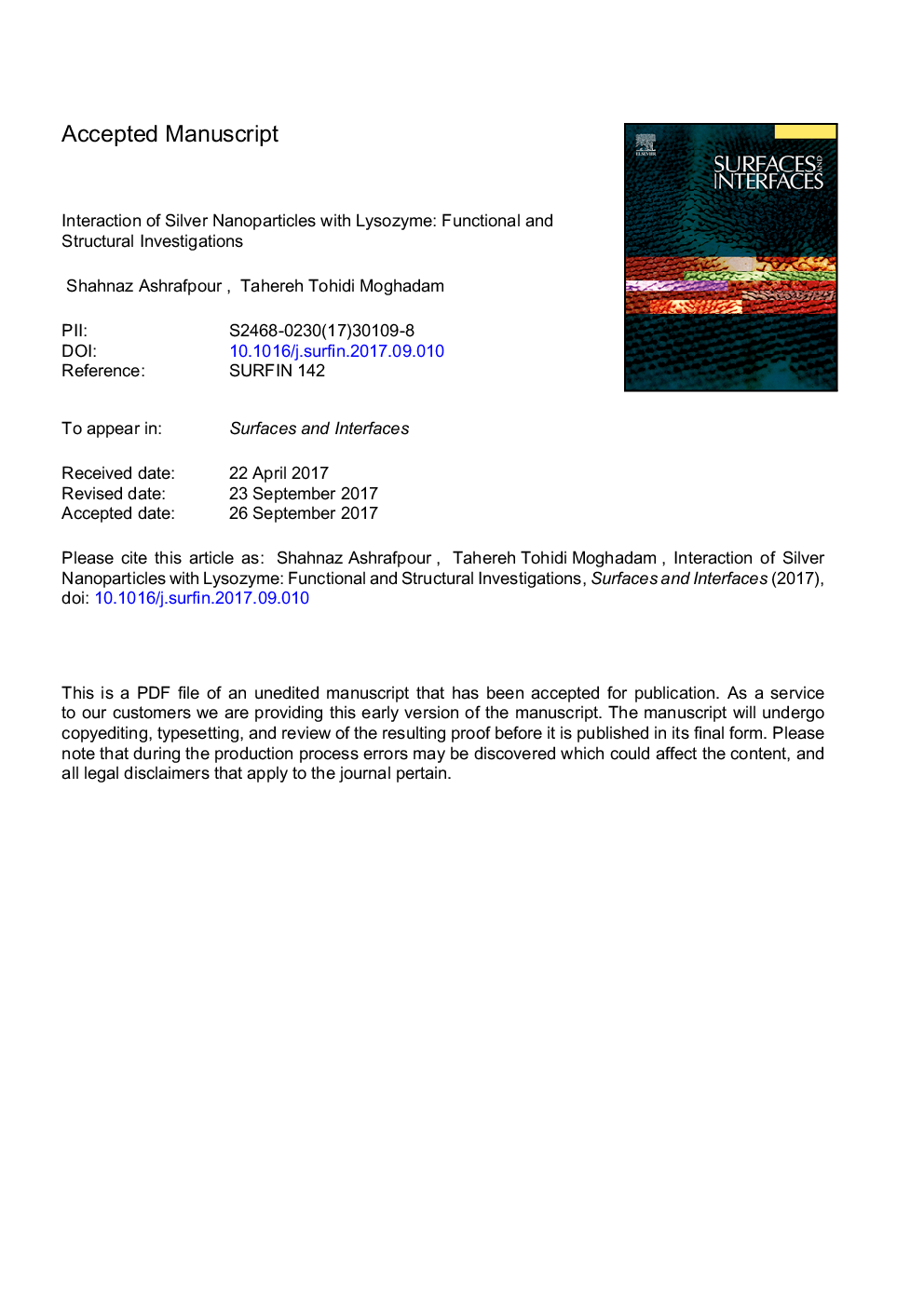| Article ID | Journal | Published Year | Pages | File Type |
|---|---|---|---|---|
| 7001191 | Surfaces and Interfaces | 2018 | 20 Pages |
Abstract
Biological implications of protein adsorption on nanoparticles' surfaces make interaction studies of paramount importance. Herein, mutual effects of lysozyme and silver nanoparticles on each counterpart have been studied using spectroscopic techniques. Surface Plasmon Resonance (SPR) studies showed decrease of interparticle distance upon interaction with biomolecule, and Dynamic Light Scattering (DLS) confirmed formation of nanoparticles aggregates. In consistency with SPR and DLS analyses, Scanning Electron Microscopy (SEM) showed that protein concentration plays a critical role either in guiding formation of stable complexes or dictating irreversible aggregations of nanoparticles. Analysis of Circular Dichroism (CD) spectroscopy data showed that protein retained most of its helical structure upon interaction with silver nanoparticles. Kinetic investigations also revealed that lysozyme almost maintained its catalytic activity, together with a slight decrease in the enzyme-substrate binding affinity. Results of this effort encourage combined utility of spectroscopic techniques to gain further insight into challenges at the interface for both bio and nano counterparts, prior to exploit variety of theranostic applications.
Related Topics
Physical Sciences and Engineering
Chemical Engineering
Colloid and Surface Chemistry
Authors
Shahnaz Ashrafpour, Tahereh Tohidi Moghadam,
